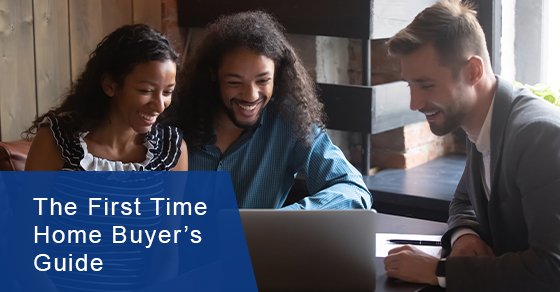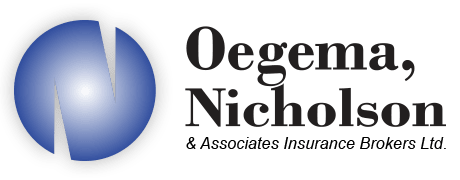
The First Time Home Buyer’s Guide
Buying a home is an exciting milestone in your life. However, it can be a complicated and very expensive process. From finding the right agent to arranging your mortgage and from house-hunting to putting in offers, you want to have a better idea of what’s in store. Here we provide your first-time home buyer’s guide to help make the whole home buying process easier.
Understand The Importance of Your Down Payment
Saving up for your down payment is the first step in the home buying process. However, this step often requires years of saving to come up with a reasonable down payment that will reduce your mortgage and improve your chances of mortgage eligibility.
Although the minimum required for a $500,000 home is just 5%, this is still $25,000. Also, realistically, unless you intend to buy a condo apartment, you aren’t likely to find a home for this price close to an Ontario urban centre.
Realistically, you should probably be saving enough for the next level which is 5% for the first $500,000 and then 10% for the balance. So for a home that costs $600,000, you would need $25,000 for the first $500,00 and then another 10% for the $100,000 remaining balance. This totals $35,000. Understanding how much you’ll need for your down payment is very important to avoid disappointment if you find your dream home and can’t put enough down to purchase it.
A good idea is to keep an eye on housing prices in your favourite areas, so you have a fair estimate of how much you’ll need to save. Remember, the more you can put down on your home purchase, the lower your mortgage rates and the more equity you have in your home from the moment of closing.
Note: For down payments below 20%, you must purchase mortgage loan insurance. In some cases, your lender might require you to get mortgage loan insurance even if your down payment is higher, which usually applies to people who have poor credit or are self-employed. So these costs must be considered when determining how much you can afford for your overall mortgage payment.
Apply For a Pre-approved Mortgage
Once you have your down payment squared away it’s time to approach lenders to find a mortgage. It might seem too early in the game for this step, but pre-approval serves many purposes. First, it tells you the maximum a bank is willing to lend you for your mortgage. This is key as it confirms a) how much down payment you’ll need and b) your budget.
Second, you’ll have a better understanding of how much your monthly payments will be for your mortgage to make sure you feel comfortable with your budget.
Third, you’ll lock in an interest rate for up to 130 days. Should interest rates drop in the meantime, you’ll qualify for the lower rate. Keep in mind it also helps you avoid disappointment should you want to put in an offer only to find you don’t qualify. Pre-approval also provides negotiation power, especially if you are involved in a bidding war and others aren’t pre-approved.
How to Apply For Mortgage Pre-approval
You can apply for pre-approval at any of the following institutions:
- Banks
- Credit unions
- Mortgage companies
- Insurance companies
- Trust companies
- Loan companies
When you apply, you’ll need to provide the lender with the following information:
- Identification
- Proof of employment
- Proof you can pay for the down payment and closing costs
- A list of your other assets
- Record of your debts and financial obligations
The lender will do a credit check looking into your assets, your debt, your income and whether or not you’ve ever declared bankruptcy. With all the information the bank then assesses your finances and determines if you qualify.
However, there is one more thing considered when qualifying for a mortgage. You have to pass the mortgage stress test. The stress test is designed to ensure you can not only afford your mortgage at the rate the bank is currently offering but into the future as well. This is a government initiative that ensures there are not too many buyers competing for homes, as well as to avoid homeowners losing their homes should interest rates or their financial situations change. This means you need to qualify based on either an interest rate of 5.25% or 2% above the rate the lender offers, whichever is higher.
Look Into Government First-Time Buyer Incentives
Once you have your financing arranged, consider the government incentives available for first-time buyers. This includes
- Home Buyers’ Plan (HBP): The HBP allows you to withdraw up to $35,000, from your RRSP tax-free to put towards your down payment.
- First-Time Home Buyer Incentive: The federal government also offers shared equity mortgages of either 5% of the purchase price of an existing home or 5% or 10% of the purchase price of a newly constructed home. However, this money has to be paid back based on the current value of your home either at the time you sell or after 25 years.
Both these options can make buying a home easier.
Find An Agent
Now you are ready to start your house hunt. Find a real estate agent either through referrals or by looking at reviews for agents with tons of experience in your chosen neighbourhood. They’ll be there to find your dream home, negotiate your offer and assist with closing. Make sure you feel comfortable with your agent as you will need to spend time with them and also need to trust them during the entire process.
Make a Checklist of Wants and Needs
Wants are the nice to haves you are looking for in your home, while needs are the deal breakers you can’t live without. Home searches require a little give and take, with a willingness to compromise on some of the little things. Your list keeps you focused while also helping your real estate narrow down your choices, so they only show you the homes that meet your criteria.
Save An Additional 3% to 5% of Your Home Price
To cover additional costs associated with your move, you should save an additional 3% to 5% of your budgeted price. This will cover things such as your legal costs, closing costs, land transfer tax, moving costs and home insurance.
Get Home Insurance
Make sure you arrange for enough home insurance. To learn more about home insurance and what policy will provide the most coverage for your new home, call Oegma, Nicholson at (613) 704-7766 or contact us here.

